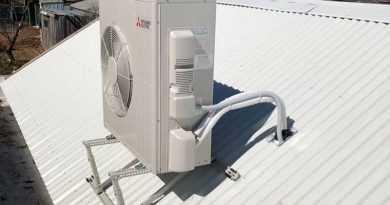A Guide to Selecting an Indoor Fireplace
An indoor fireplace can transform the ambiance of your home, providing warmth, comfort, and a cozy focal point. Whether you’re renovating an existing fireplace or adding a new one, selecting the perfect fireplace is a crucial decision. This guide will help you navigate the factors to consider when choosing the ideal indoor fireplace for your space.
Determine the Purpose
Before delving into the types and designs of fireplaces, consider the purpose of your fireplace. Are you primarily seeking a heating source, a decorative element, or a combination of both? Your answer will guide your decision-making process.
Style and Aesthetic
Consider your interior design and personal tastes. Your fireplace should complement your decor and add to the overall aesthetic of the room. There are various styles to choose from which you can find at specialists like stonewoods.co.uk, such as traditional, contemporary, rustic, or minimalist, and a variety of materials like stone, brick, tile, or metal for the fireplace surround.
Size and Location
The size and location of your fireplace should be proportionate to the room and its layout. Make sure that it doesn’t overpower or underwhelm the space. Additionally, consider where you want to place your fireplace, whether it’s in the living room, bedroom, or a more unconventional location like the kitchen or bathroom.
Ventilation and Safety
Ventilation is a critical aspect of fireplace installation. Wood-burning fireplaces need a chimney or vent system. Gas fireplaces require direct venting or ventless options. Electric fireplaces don’t require any ventilation. Ensure that safety measures like screens and gates are in place, especially if you have children or pets.
Heating Efficiency
Different types of fireplaces have varying heating efficiencies. If you’re looking to use your fireplace as a primary heating source, gas fireplaces are known for their efficiency. Wood-burning fireplaces are less efficient, but they provide a traditional and cozy feel.
Budget and Operating Costs
Your budget should not only encompass the cost of the fireplace itself but also installation, materials, and ongoing operating costs. Wood-burning fireplaces may have lower upfront costs but higher operating costs due to the requirement for firewood. Gas fireplaces have a moderate upfront cost and lower operating expenses. Electric fireplaces typically have the lowest upfront and operating costs.
Maintenance
Consider the maintenance requirements of your chosen fireplace type. Wood-burning fireplaces need regular cleaning, while gas fireplaces may require annual inspections. Electric fireplaces are the easiest to maintain.
Regulations and Permits
Check local building codes and regulations to ensure that you have the necessary permits for fireplace installation, especially if you’re installing a wood-burning fireplace.
Additional Features
Modern fireplaces often come with additional features, such as remote controls, adjustable flame settings, and heat distribution systems. Explore these options to enhance the functionality and convenience of your fireplace.
Professional Installation
Unless you have experience with fireplace installation, it’s recommended that you hire a professional to ensure safety, compliance with building codes, and optimal performance.
In conclusion, choosing the perfect indoor fireplace involves careful consideration of your preferences, needs, and practicalities. It’s an investment that can elevate the comfort and aesthetics of your home, so take your time to explore the options and make an informed decision. Once your fireplace is in place, you’ll have a beautiful and functional addition to your living space that can be enjoyed for years to come.


